As delicious as they sound, Asparagus Ferns are actually neither a vegetable nor a fern.
To be fair, these ornamental plants are from the same family as our favorite (eye-wateringly expensive) green sticks, and the foliage looks a lot like that of a fern. So I can see what they’ve done there.
Just to add to the confusion, there are a few different types of Asparagus Fern too. But the one I’ll be writing about today is arguably the most common, Asparagus setaceus.
You’ll recognize it from its bright green, triangular needle-like foliage. It really is stunning, and it adds a unique visual texture that you don’t often find in the home.
I’ve grown it as a houseplant and used it in several terrariums over the years. Personally, I like to use it to contrast broad-leafed foliage plants, but it’s not without its growing challenges.
In this guide, I’ll share how to grow the Asparagus Fern and how to use it in terrariums.
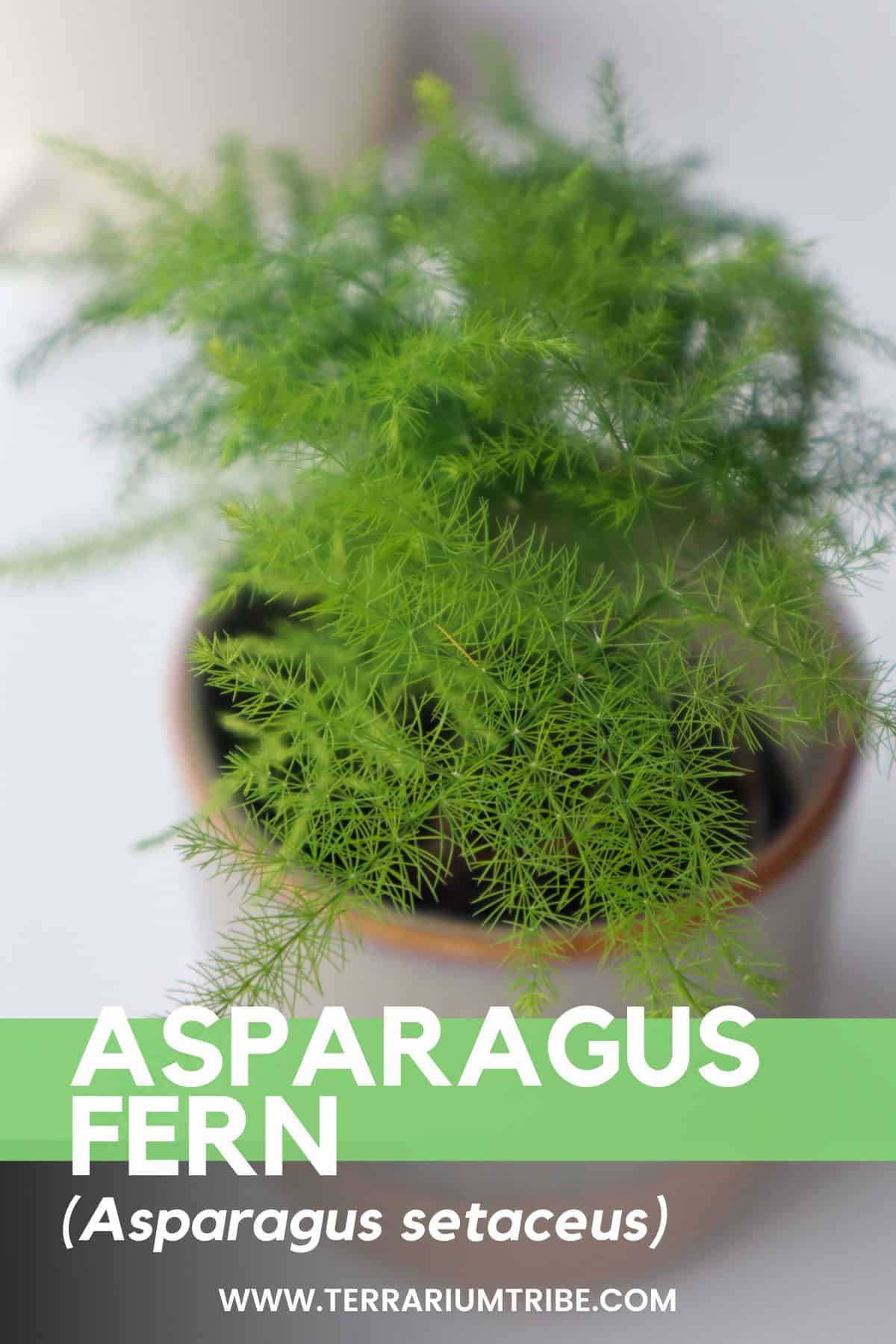
Where to Buy Asparagus Ferns
See the links below to purchase from reputable terrarium plant shops and marketplaces (may include affiliate links).
Asparagus Fern Care – Key Points
| Plant Type | Fern-ish |
| Lighting | Bright, indirect light |
| Temperature | 65-80°F (18-26°C) |
| Watering | Regular, even moisture |
| Humidity | Medium – high humidity (60-90%) |
| Growth | Up to several feet tall + wide. |
Watering
They may not be true ferns, but you can treat these in much the same way when it comes to watering, i.e., they like plenty of moisture.
So you can expect them to do well in a closed terrarium environment when paired with tropical species and real ferns.
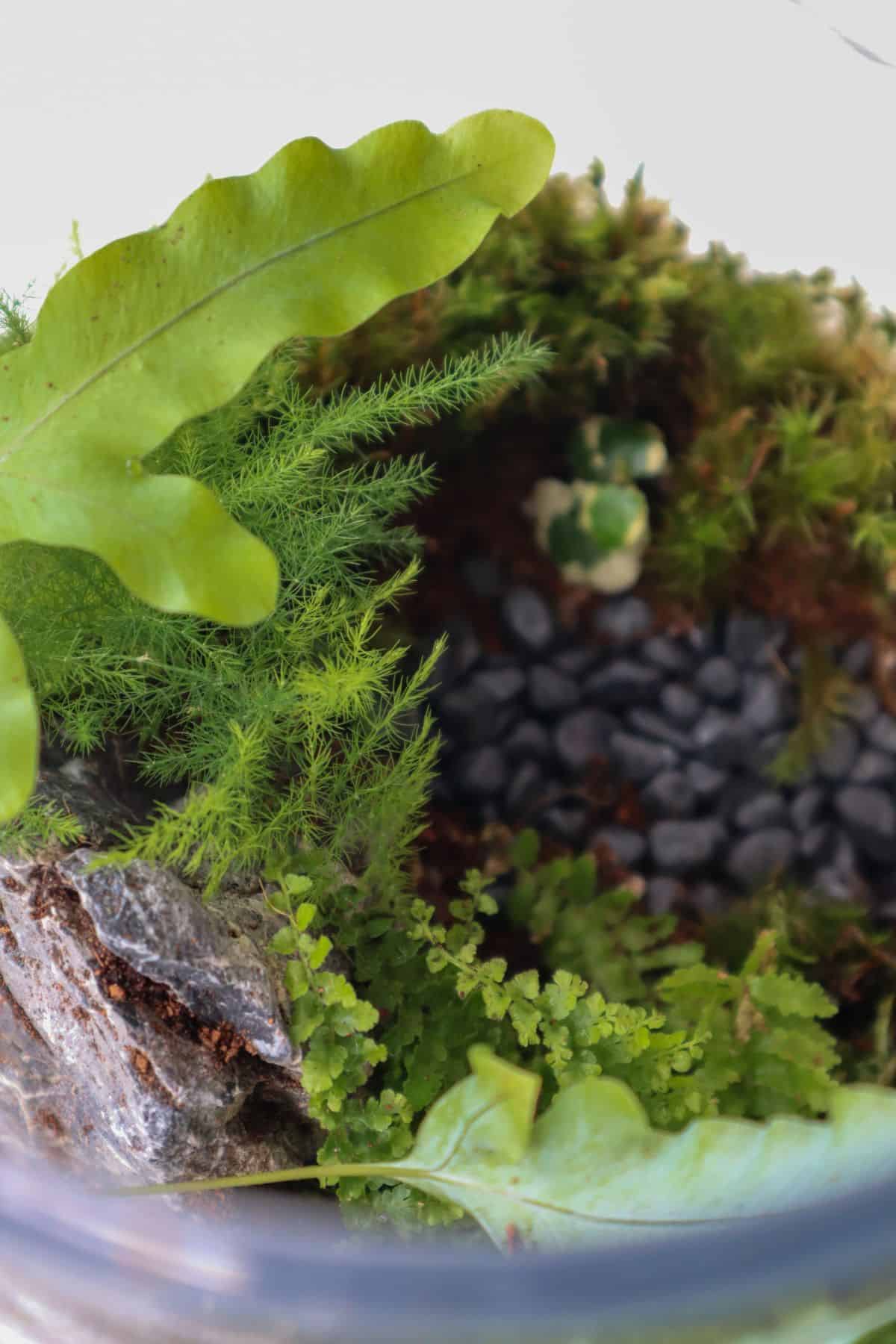
Consistent moisture is the name of the game, and dropped leaves are the cost of losing it. And seriously, leaf drop is the WORST with this plant – especially in terrariums (more on that later).
Soil / Substrate
Naturally, for a plant that likes consistent moisture, a substrate with solid water retention will help a lot.
A coco coir base is always a good starting point, with added drainage elements to balance the mix. You can use orchid bark, pumice, lava rock, or even horticultural sand (which is often used with ferns) to achieve this effect.
Naturally, all of the substrates that I recommend for terrariums would work well here. I’d plant Asparagus Ferns in something like an ABG mix or a typical fern mix for best results.
👉 Our tropical substrate mix is a great fit here.
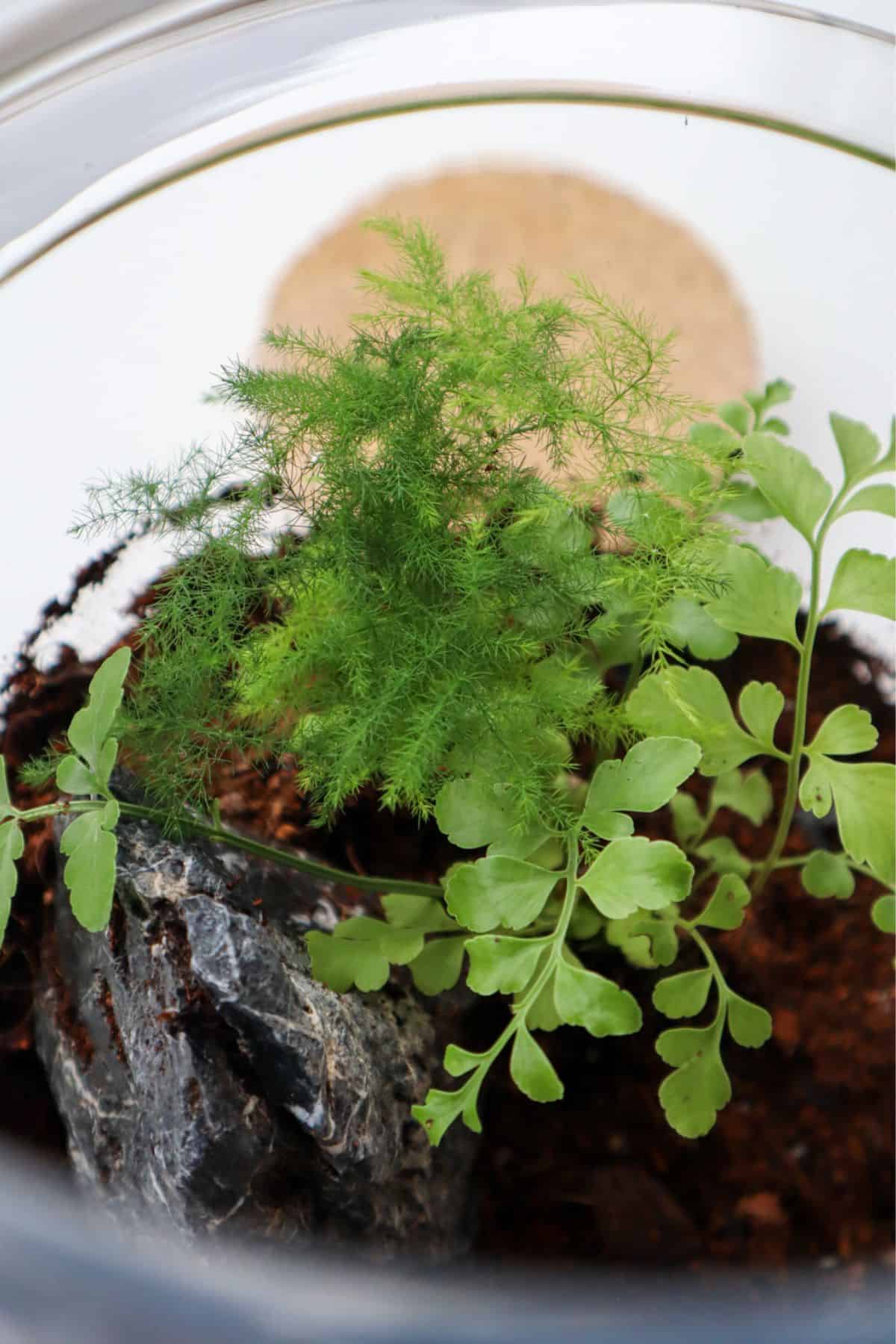
Temperature & Humidity
Maintaining a high humidity level goes a long way in offsetting the high moisture requirements of this plant, so give it as much as you can when growing indoors.
I’d suggest 50% humidity at a minimum, but I’d be looking to get closer to 80% to keep the foliage vibrant and healthy.
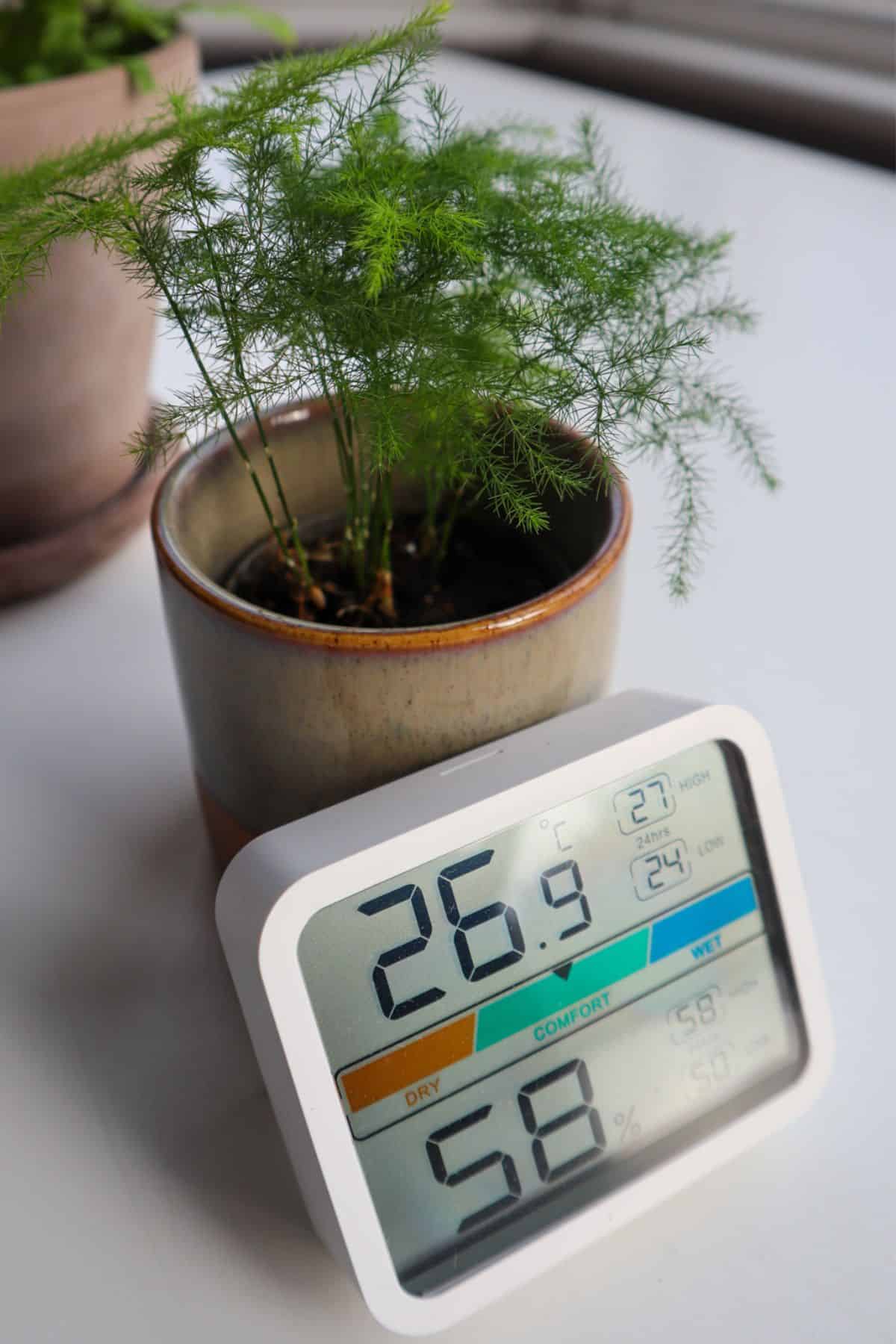
Again, that’s a big part of why Asparagus Ferns thrive in terrariums. The stable humidity levels (often pushing 100%) and consistent access to moisture are a match made in heaven.
Temperature is less of an issue. Indoors, they’ll do well in typical household conditions. So as long as you’re comfortable in the room, you can expect your plant to be too.
Growth
Okay, so it’s important to note that Asparagus Ferns can get big. Really big.
For reference, grown in the home, they can eventually reach a few feet high and wide. So just bear that in mind when you purchase your tiny starter plant!
They also grow reasonably fast. So whilst they make good terrarium plants in some ways, it’s likely that left unattended, they’ll eventually outgrow a terrarium space.
Personally, I’ve always used small plant divisions in my projects, so I’ve never reached a point where they’ve become a problem. Plus, they’re easily trimmed; you can simply cut the taller “fronds” at the base.
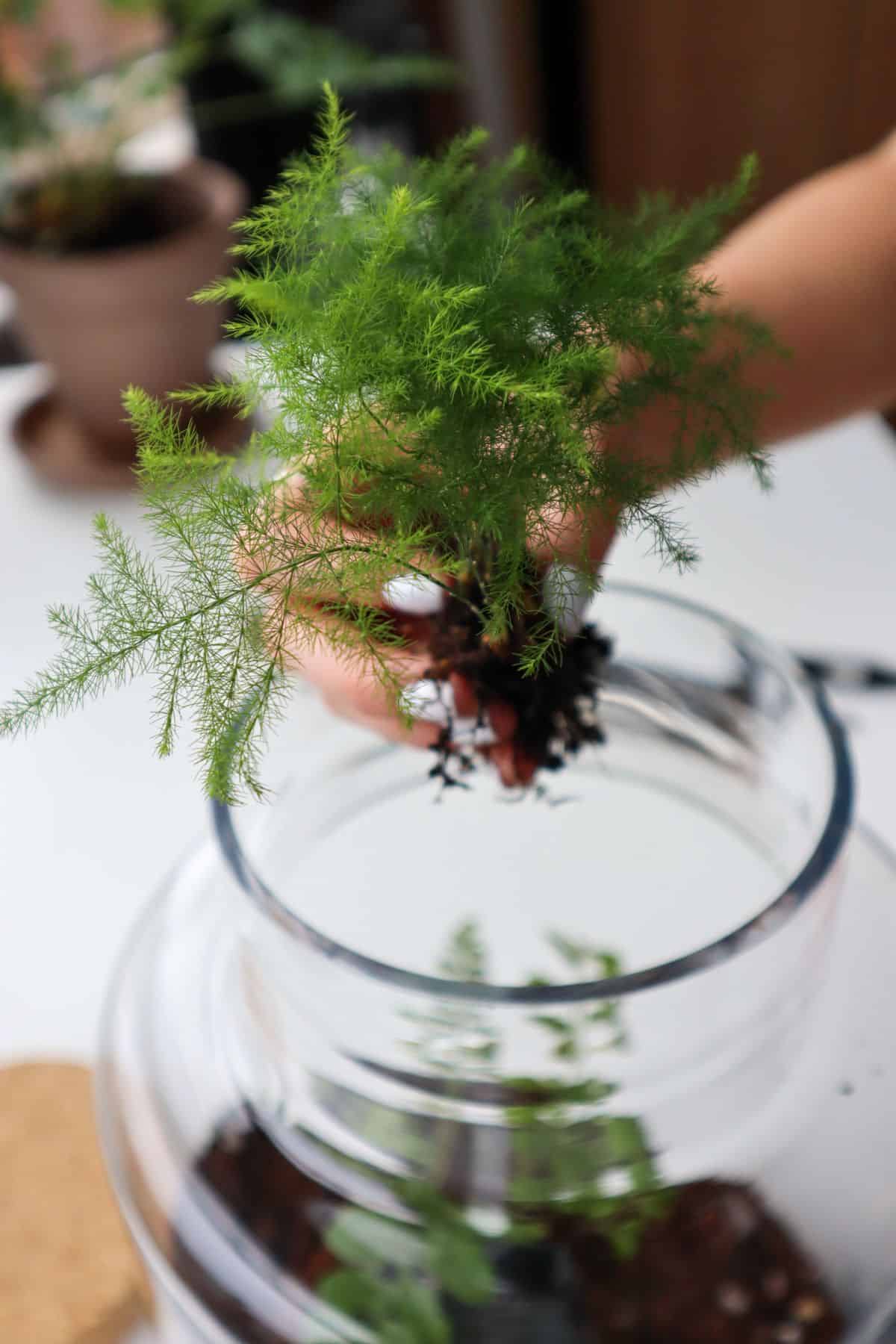
Things to look out for:
- These plants also develop thick, tuberous roots. So they might become a problem faster than the foliage (i.e., thick roots and enclosed glass spaces don’t tend to play well together).
- Also, apparently mature plants grow to form sharp spines on their stems – who knew? I never really saw this plant as a climber, but it’s full of surprises!
The take-home from this is that Asparagus Ferns in terrariums are a double-edged sword. Sure, they look pretty and grow well, but that could come back to bite you later…
Foliage Issues
Interestingly, what we see as the needle-like leaves of these plants are actually “leaf-like cladodes” (more like tiny stems). The true leaves are near the base of these stem structures.
What I hate about these so-called cladodes is that they go everywhere…
Picking up the occasional dried leaf is one thing, but these things shed like Christmas trees. Ever tried picking up plant needles with tweezers? I don’t recommend it. 😂
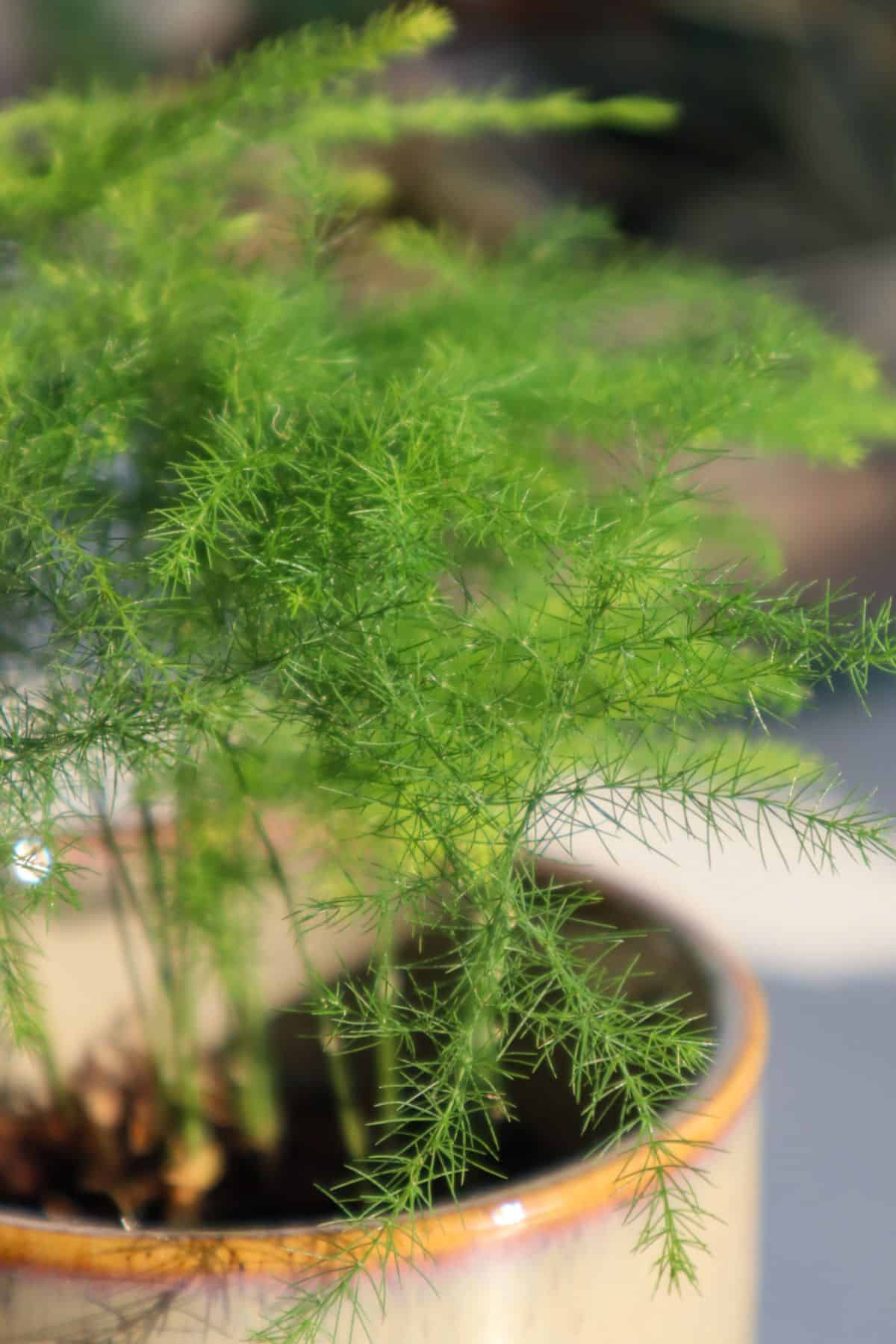
Dropped leaves are also a potential liability in terrariums because they can eventually rot. So whilst I do recommend extracting dropped leaves where possible, it’s really hard to do effectively with Asparagus Ferns.
Oh, and they can even bloom with white flowers too, so you’ll need to look out for those dropping too.
Using these plants primarily in bioactive terrariums is one way to get around the problem, as you have a mechanism to recycle organic material before it rots. Put those isopods and springtails to work!
Lighting
Though the Asparagus Fern is often grown outdoors (and is even regarded as an invasive plant in some regions of the world), that doesn’t mean it’s able to withstand a lot of light.
In fact, too much light can yellow its delicate foliage.
So as with real ferns, bright indirect light is best here. Making Asparagus Ferns a great pairing for tropical plants in terrariums.
How to Propagate Asparagus Ferns
Due to those tuberous roots I mentioned earlier, Asparagus Ferns can only be propagated by division.
Thankfully, it’s easier than you might think.
You’ll want to expose the roots and then cut where they naturally form offshoots. With them being so chunky, it’s typically easier to identify than with other plants.
Once you’ve divided your mother plant, the babies can be planted up as you normally would!
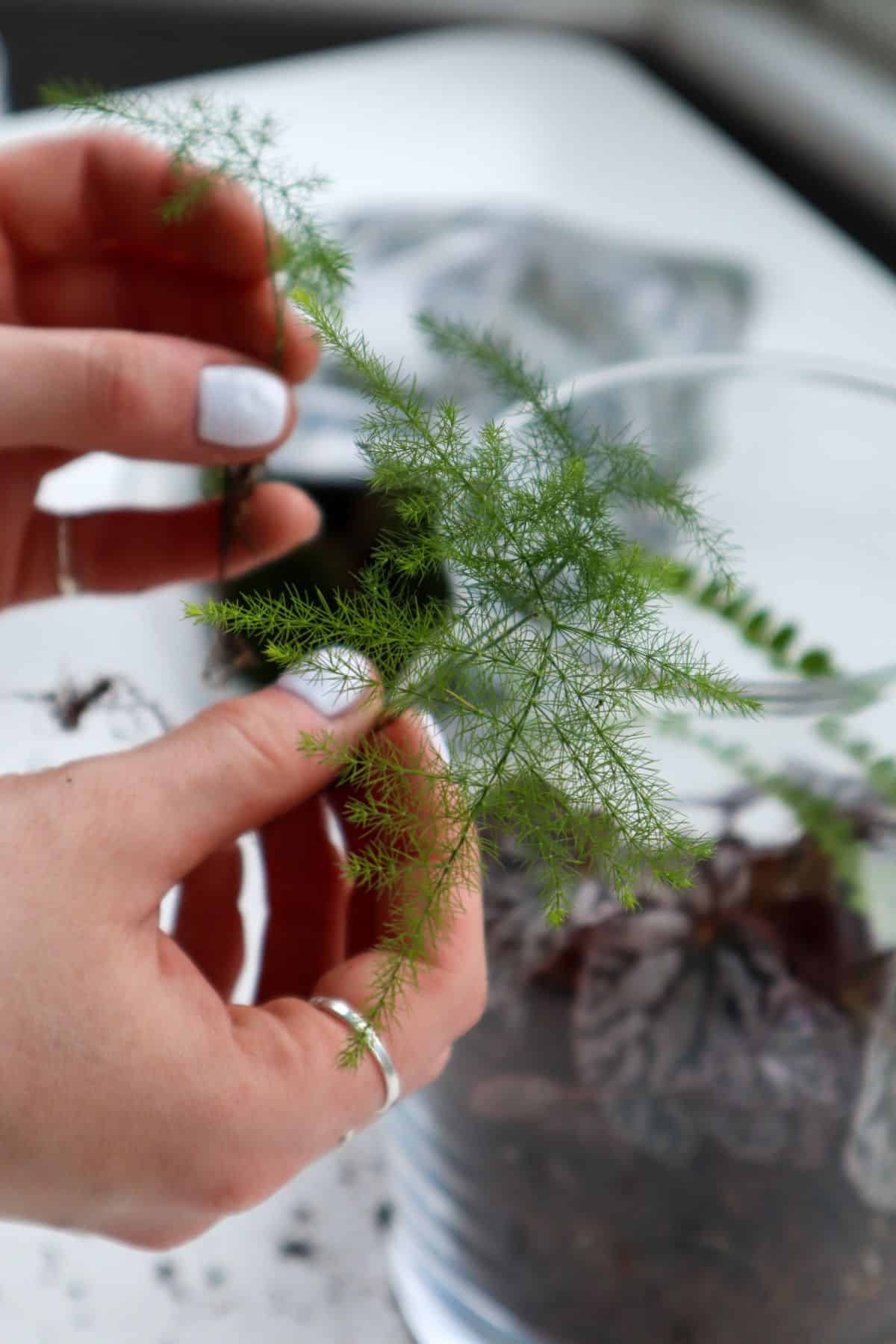
Varieties & Similar Plants
Things get a little confusing with the so-called Asparagus Fern because it goes by many other common names (and even a variety of scientific names). Plus, sellers often don’t label their plants with the respective variety.
As an example, the name A. setaceus is somewhat interchangeable with Asparagus plumosus. Weirdly, this plant also goes by the ‘Lace Fern’, which is often reserved for Pteris ferns, e.g., the Silver Lace Fern.
All of this to say that it’s worth the extra due diligence to figure out exactly what you’re buying.
For terrarium usage, the more compact “Nanus” variety is one to look out for. And the one I suspect I’ve been using but haven’t been able to identify…
Alternatively, there are other Asparagus Ferns with quite different foliage. Asparagus densiflorus (the Foxtail Fern) foregoes the feather-like foliage in favor of longer arching stems, more like a Sword Fern in nature.
